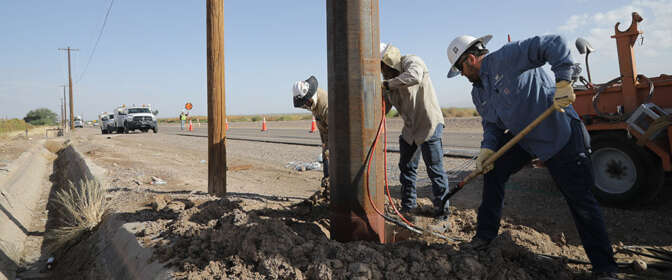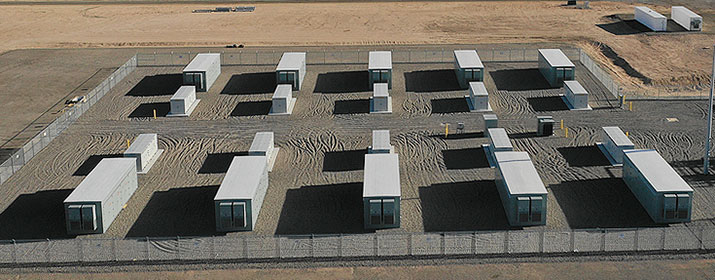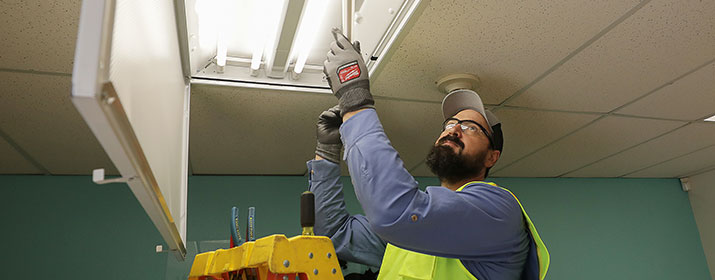
How many poles does TEP have? Probably more than you think. We’re at about 107,000 and counting. Check out this infographic that highlights the critical role poles play in delivering electric service to you.
How do you test them for reliability? TEP typically replaces about 1,200 poles annually due to emergency and routine maintenance, new business, system improvements and line relocations. We also replace poles proactively based on testing. We use a tool with a very small diameter drill bit, or needle, that drills three holes through each pole at specified locations. The tool develops a profile of the wood pole, including any pockets of cavity and decay, and calculates the remaining strength of that pole. This data determines whether the pole will be replaced or scheduled for subsequent testing. Our goal is to ensure reliability while getting the most out of each wood pole.
About a quarter of our poles are made of steel, as are the vast majority of our new poles. We do install new wood poles in tight alleyways and in other areas that are inaccessible to bucket trucks.
Our high standards mean we get some of the best poles on the market. We inspect every single wood pole that we purchase and we treat them to guard against insects and fungus.
What’s on a pole? Utility poles support more than power lines. The Telecommunications Act of 1996 requires utilities like TEP to let phone, cable and other telecommunications companies use our poles if they want. This graphic provides a closer look at what’s hanging from our poles.
How easy is it to replace a pole? Unfortunately, it’s not as easy as just digging a hole and sliding in a new pole. This methodical work could take hours. We start by securing the scene for safety, locating other underground lines and lining up supplies. Then, after ensuring that the proposed pole installation satisfies our engineering design standards, our crews begin digging a new hole that might need to be 6.5 feet or deeper for stability. Then, they outfit the new pole with new equipment, carefully test their work and, finally, restore power. The average replacement, even under ideal conditions, takes about 3 hours. Here’s a detailed look at what restoration looks like.
How do I get out of my car if there is a downed power line? Staying far away from downed power lines is your best bet for safety. But if you encounter downed wires while in your car, here’s how to safely handle the situation.
What was the origin of the power pole? The first documented use of utility poles was in 1844 for telegraph systems. The use of poles for electricity followed the success of those telegraph lines. By the turn of the century, it became evident these poles should be consistent and predictable. So, in 1924, the American National Standards Institute adopted standards for wood utility poles. Learn more here.
What is the voltage level in your power lines? Our conductors operate at many different voltages. Some of our transmission lines, which you might see suspended from metal lattice towers or tall monopoles, operate at up to 500,000 volts. Transformers “step down” that electricity so it can be used in your house. Lines that connect to your house are usually operating at either 120 or 240 volts.
If power lines are so dangerous, why can birds sit on them? When birds sit on a single conductor, their lightweight bodies don’t provide a path for power flow. Raptors, however, are large enough that they can sometimes touch two wires at once, creating a potential for electrocution. TEP equips all new utility poles with silicone and fiberglass covers designed to keep raptors away from energized components. We also retrofit existing equipment with these protections when raptor nests are discovered nearby. You can help by reporting raptor habitats.
Since bucket trucks are available, do lineworkers have to climb poles anymore? They sure do. Bucket trucks can’t get into many of the remote or hard-to-serve areas in our service territory, so climbing is still an important skill. It’s made harder because the crews are climbing with up to 40 pounds of safety gear and tools, including hard hats, safety glasses, climbing belts, leather gloves, safety shoes and electrically-safe clothing.
How hard is it to become a lineworker? It’s a commitment. The pre-apprenticeship program takes at least a year. Participants work alongside more seasoned crew members to learn everything from proper climbing techniques to how to care for safety equipment. Graduation to the apprentice program means four years of intensive study, including on-the-job training and a set of tasks and curriculum. Their hands-on training occurs under the tutelage of an assigned journeyman lineworker. In all, it takes five years to become a journeyman. And that’s just the start in a field that demands lifelong learning and continuing education within the trade.






